When the Olympus M.Zuiko ED 300mm f4.0 IS PRO lens was announced and released over a year ago, it became the most intriguing lens in the Micro Four Thirds lineup to me. The 2x crop factor of Micro Four Thirds made the 300mm f/4 equivalent to 600mm on a 35mm full frame sensor. A long focal length telephoto lens is one piece of glass that has always been missing from my kit. The longest I have ever shot was 300mm on Canon APS-C (1.6x) and that was with a ‘kit’ zoom lens with variable maximum aperture.
The fact that the Olympus 300mm f/4 is in the Olympus PRO series line with superb glass and internal Image Stabilization that combines with the In Body Image Stabilization (of the E-M5 Mark II or E-M1 Mark II), makes this lens a highly coveted piece of glass for Micro Four Thirds shooters.
Since I acquired the Olympus OM-D E-M1 Mark II at the beginning of the year, I decided to splurge on the Olympus M.Zuiko ED 300mm f4.0 IS PRO to expand my photography kit.
When I received the Olympus 300mm f/4, I wasn’t sure to expect in terms of size. Long telephoto primes for dSLR are relatively large in form factor, but Micro Four Thirds lenses are smaller to their equivalent dSLR counterparts. Given the Olympus 300mm is a PRO series lens with a relatively large aperture (f/4) for the focal length and seventeen lens elements, it is also not going to be a small lens by any means.
When I unboxed it, I immediately noticed that I felt just like my Canon EF 70-200 f/2.8L IS II. Bringing out the Canon 70-200 for a side-by-side comparison revealed the Olympus 300mm is actually slightly longer than the Canon 70-200mm.
Based on the respective manufacturer’s specification pages, the Olympus 300mm is 8.94 inches / 227 mm in length while the Canon 70-200mm is 7.8 inches / 199 mm in length (both without lens hood attached / extended). The Olympus 300mm lens weighs 1270 grams and 1475 grams with the lens tripod collar. Canon states that the Canon 70-200mm lens weighs 1490 grams with no indication if with or without the collar.
The Olympus 300mm has two switches on the barrel: focal range limiter and IS toggle. An L-Fn button is also provided on the lens barrel.
The large knurled focus ring also acts as the manual / auto focus toggle like many other Olympus Micro Four Thirds lenses. Simply pull the focus ring back towards the camera to switch to manual mode. This also reveals the distance markings.
You will notice in the markings in the photo above that the filter size is 77 mm, which is a common filter size for lenses of this physical size. Incidentally, 77 mm is the same filter size as the Canon EF 70-200mm f/2.8L IS II.
One of the pleasant surprises I discovered with the Olympus 300mm is the lens tripod collar.
As you can see above, the lens tripod collar has an Arca Swiss style dovetail cut into the foot. This means you do not need to get a separate Arca Swiss adapter plate to mount the lens to an Arca Swiss compatible head.
Note: Arca Swiss compatible plates can be loosely defined. It is well known that Really Right Stuff has a slightly different dovetail angle than some other Arca Swiss style clamp. But I have found that the Olympus 300mm lens tripod collar clamps directly to a RRS quick release lever clamp securely.
Engineering the Arca Swiss style dovetail is a smart move on the part of Olympus, and I very much appreciate this design choice.
The lens hood is actually ‘permanently’ attached to the lens and cannot be removed by the user. The lens hood is simply extended and retracted as needed.
The lens hood can be friction locked in the extended position by rotating it to right. The lens hood cannot be locked while in the retracted position.
One of the important points to note is that as of April 2017, the lens optical image stabilization (OIS) in the Olympus 300mm works in conjunction with the In Body Image Stabilization (IBIS) of the Olympus OM-D E-M5 Mark II, E-M1 (original and Mark II), and Olympus Pen F to provide what is called Sync IS. Sync IS provides 6-stops of image stabilization. If you do not have a Sync IS capable body, you can opt to use either IBIS or the OIS of the lens. Most people will opt to use IBIS since the OIS is 2-axis while most Olympus MFT bodies are using 5-axis IBIS.
But the one caveat here is that Sync IS capable bodies only allow you to use Sync IS or nothing. Toggling the IS switch on the lens barrel while it is attached to the E-M1 Mark II means that IS is turned off completely (no IBIS or OIS).
As far as the lens itself, I have found it to be quite sharp wide open. The main issue in getting sharp photos with the 300mm will be nailing focus with this lens. On relatively stationary subjects, the image stabilization nearly guarantees you will be in focus.
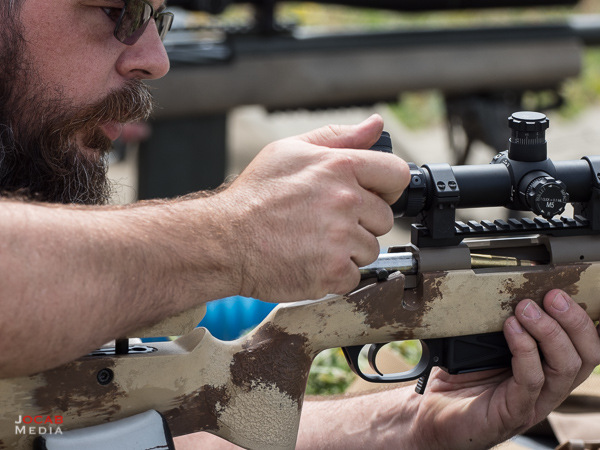
With moving subjects, you definitely are going to have to rely on technique and mastery of your gear. But autofocus is quite fast with the 300mm f/4 IS PRO, and in combination with the reliable AF of the E-M1 Mark II, getting sharp, in focus shots on moving objects can be accomplished with regularity.
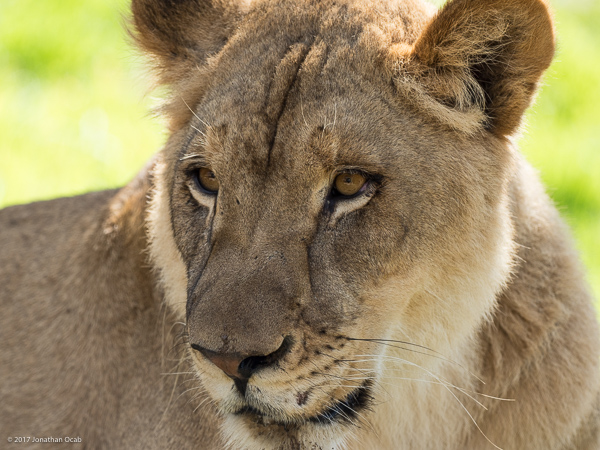
While quality of bokeh can entirely subjective, and often varies depending on the background distance and other factors, I have found the bokeh with this lens to be more than satisfactory.
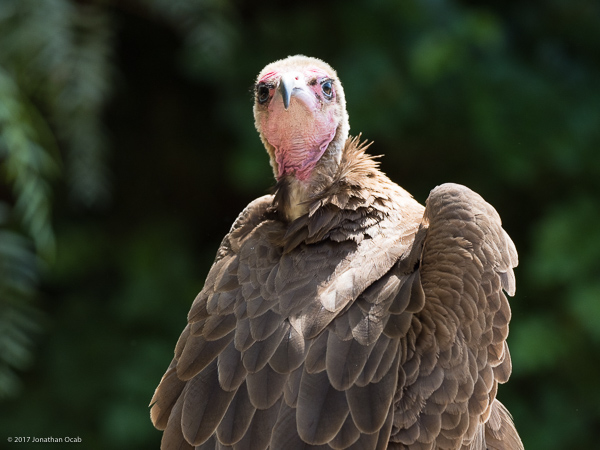
Subject edges are distinguishable even from the noisiest of backgrounds.
- 1/640 sec, f/4, ISO 400.
- 1/400 sec, f/4, ISO 800.
Chromatic aberration is generally not a problem from what I can tell.
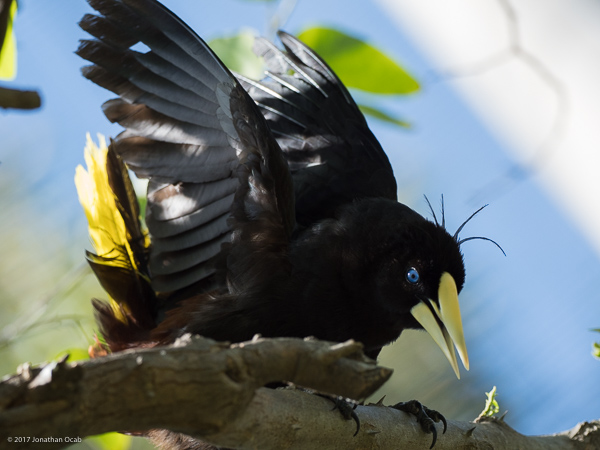
The animal photos in this review were taken at the San Diego Safari Park (formerly known as the San Diego Wild Animal Park), and in the past I have used the 70-200 on Canon APS-C and Full Frame bodies at the Safari Park. Having a 600mm effective lens at the park definitely opens up more options when taking photos at the exhibits.
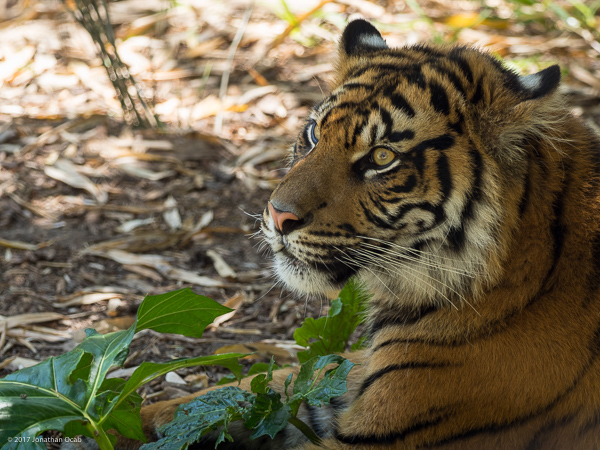
While the 600mm effective focal length does give you more reach and the ability to shoot past other objects due to the tighter field of view, the fact that is a fixed focal length means you do have to pick your vantage point carefully.
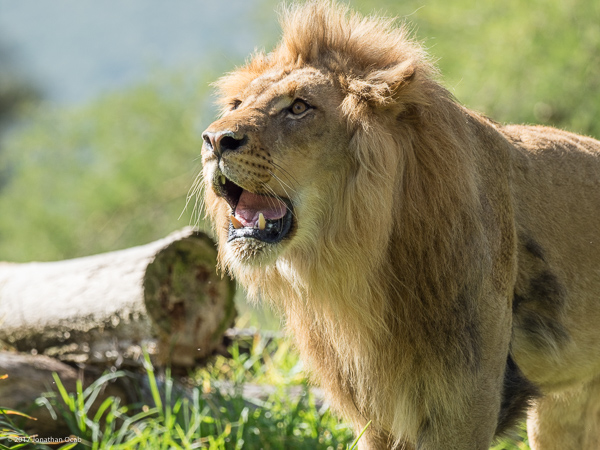
For those who do use glass for long range objects should understand that while the 300mm on Micro Four Thirds (600mm effective on 35mm full frame) can give the ability to reach out to distance, clarity is always going to be subject environmental conditions.
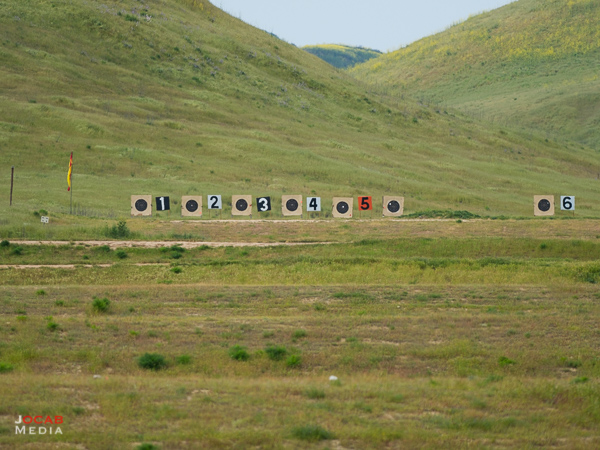
The above photo was taken on the firing line at an NRA Long Range 3×1000 match. The targets in the distance are 1000 yards away and the black circles are 44 inches in diameter.
If I am going to have any complaints about the Olympus 300mm f/4.0, they are both regarding physical design issues.
I mentioned earlier that the lens hood is non-removable, which in itself is not an issue to me. But the one aspect I wish Olympus covered is the ability to lock the lens hood in the retracted position. The lens hood can be locked in the extended position, so I wish they could have added the feature for when it is in the retracted position.
The second complaint would be the focus ring toggle feature. I have found that it is not difficult to accidentally move the focus ring to manual focus or vice-versa. This is the case on other lenses in the Olympus line up (such as the Olympus M.Zuiko 12-40mm f2.8 PRO), but the Olympus 300mm lens’ focus ring is significantly larger at around 1.5 inches vs .5 inches on the 12-40mm. Depending on how you grip the lens with the support hand while handholding, accidental toggling of the focus ring can be annoying. Thus, I wish Olympus included a locking feature for the focus ring. I am not sure how this would be engineered, but it would be nice to have.
With all of this said, I find the Olympus M.Zuiko ED 300mm f4.0 IS PRO to be a very satisfying lens. The overall package includes quality glass, optical image stabilization, a long focal length, a relatively large aperture, weatherproofing, and solid design.
While many Micro Four Thirds shooters will balk at the $2500 USD price tag, this is actually a solid value if you compare it to the native 600mm f/4 IS offering from Canon. The Canon EF 600mm f/4 IS II currently runs for $11,500 USD, and is 17.6 inches / 448 mm long at a weight of 3.92 kilograms (8.64 pounds). So the fact you can get a quality 600mm effective telephoto with IS at a fraction of the cost, size, and weight of the Canon equivalent makes the Olympus 300mm f/4 IS quite attractive.
Obviously, this lens is not for everyone. But if you want a lens that can reach out for wildlife, sports, and even concerts and performances, the Olympus M.Zuiko ED 300mm f4.0 IS PRO is definitely a lens to consider. If you are a Micro Four Thirds shooter, you will definitely have a fun time with this lens.
The following gallery of photos were all shot with the Olympus M.Zuiko ED 300mm f4.0 IS PRO, most with no cropping (minimal cropping on any that were).
Note: All photos taken in the San Diego Safari Park are for informational purposes with regards to demonstrating the capabilities of the Olympus M.ZUIKO 300mm f4.0 IS PRO lens. The images are not for (re)sale or redistribution.

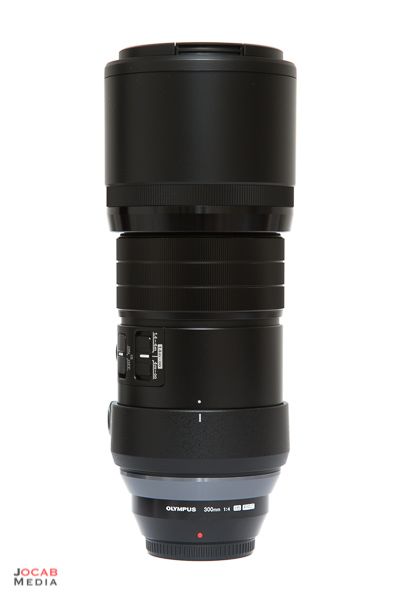
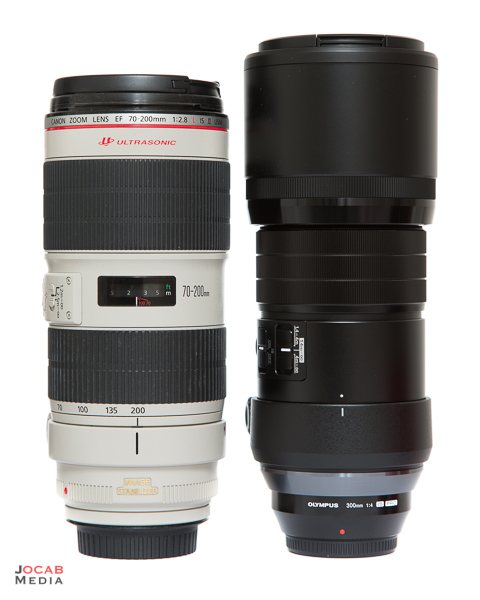
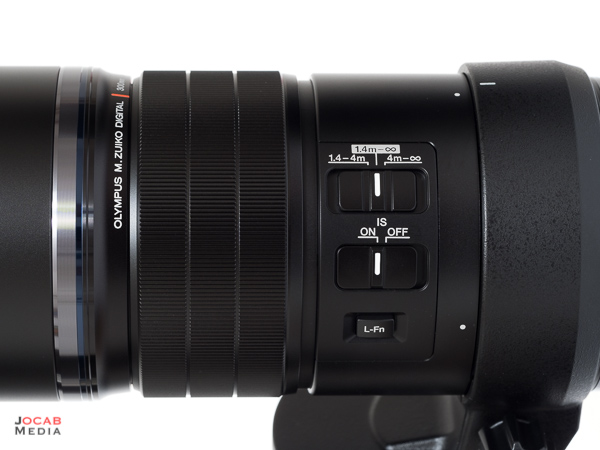
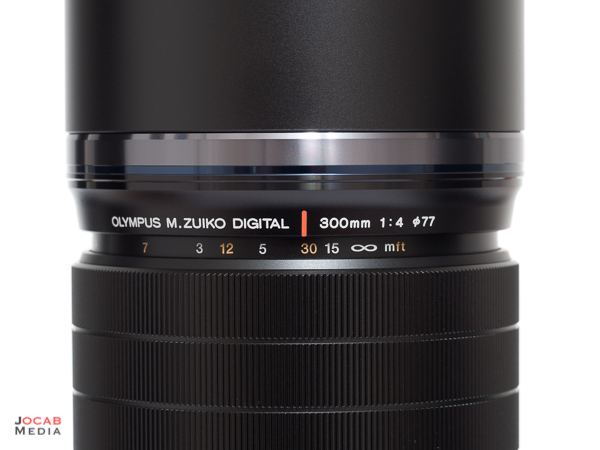
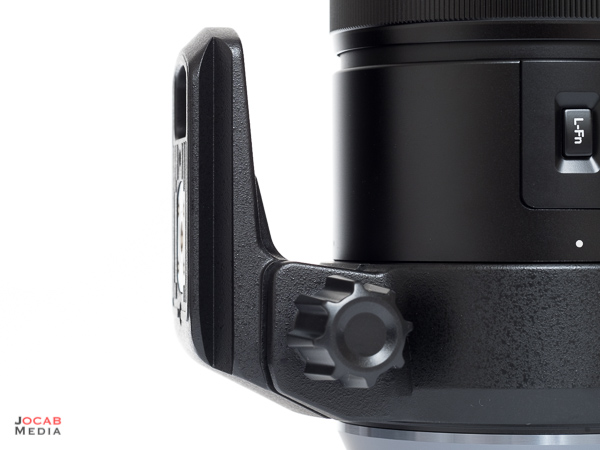
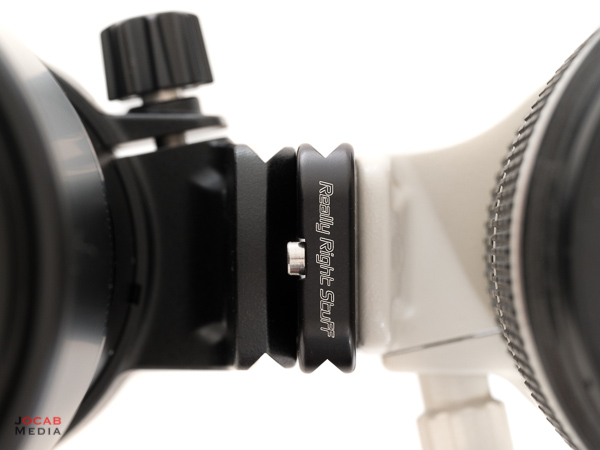
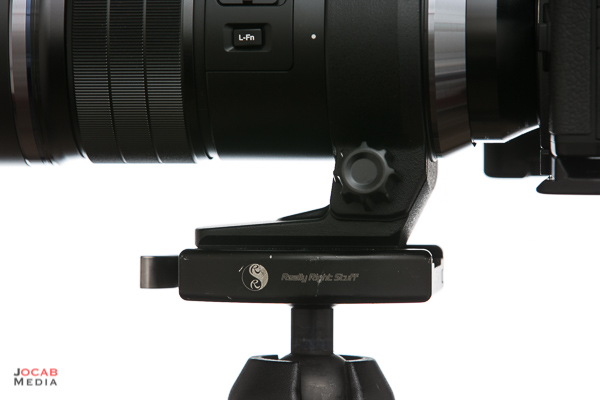
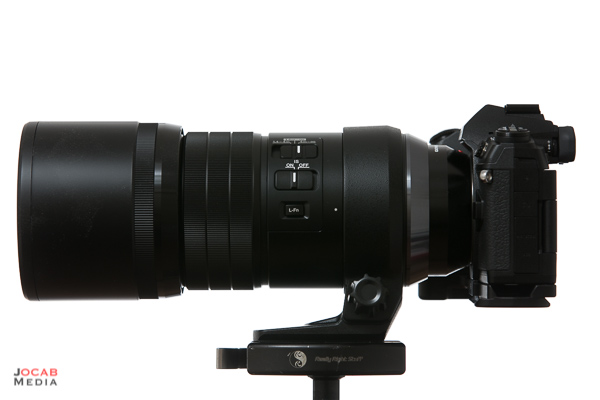


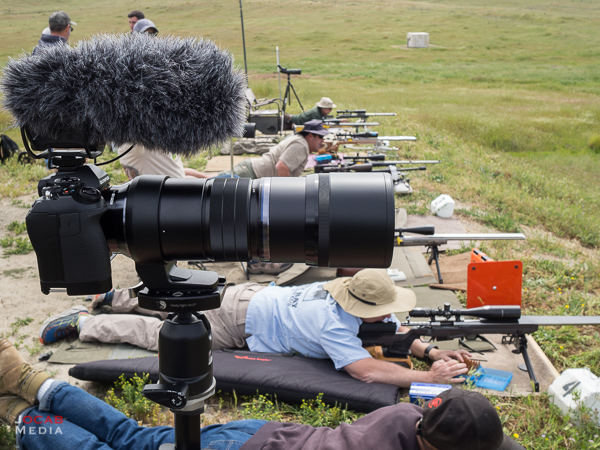
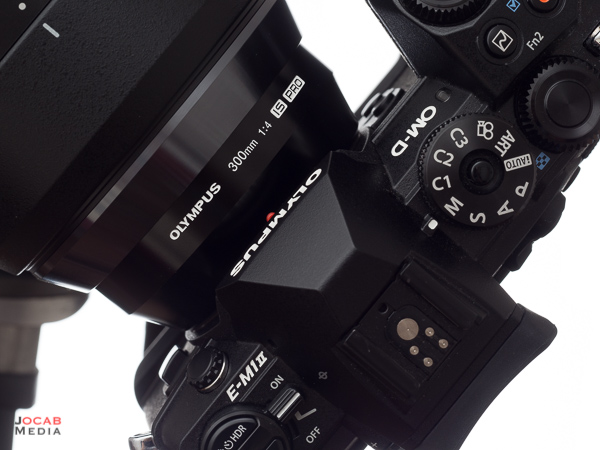
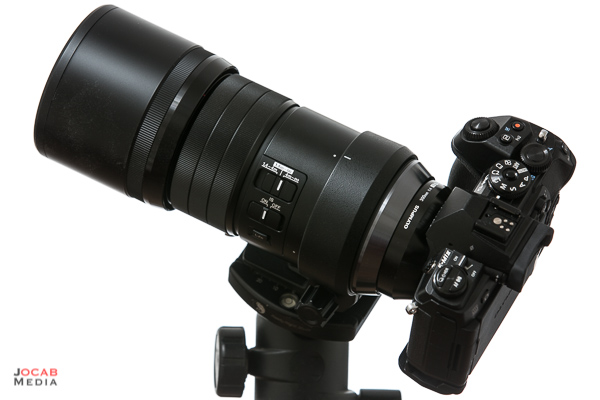


















Paul
Thanks for another great post.
Mini-Review: Olympus M.Zuiko Digital 1.4x Teleconverter MC-14 – ocabj.net
[…] Acquiring the Olympus M.Zuiko ED 300mm f4.0 IS PRO lens several weeks ago opened up a new world of photography for me by giving me a lot more reach than I have ever had before in my digital camera kits. But while having a 600mm effective (on 35mm full frame) with superb sharpness and clarity is fantastic, the thought of getting a teleconverter to stretch the lens even more was too enticing to pass up. […]